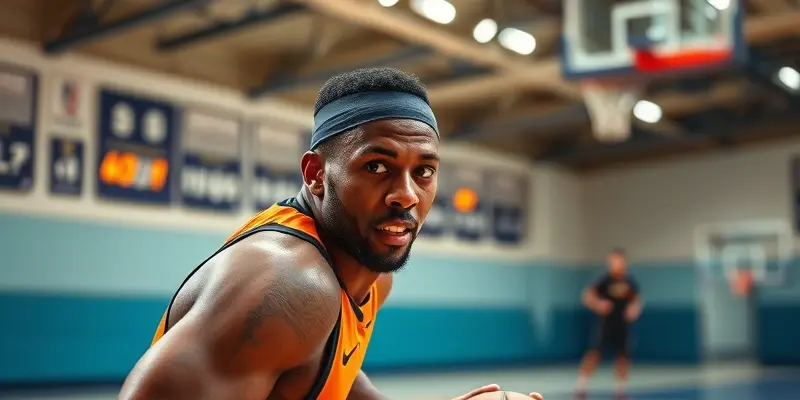Whether you play pick-up games on weekends or compete at a high level, off-season recovery and injury prevention are the keys to sustainable basketball success. As someone deeply involved in sports training and athlete wellness, I’m thrilled to guide you through tried-and-true strategies to help you stay strong, healthy, and motivated all year round.
Why Off-Season Recovery Should Be Your Secret Weapon
Did you know most performance gains happen between workouts, not during them? Without proper recovery, even the most gifted athletes risk burnout and injury. Off-season is the perfect time to address weak spots, rebuild, and prepare for peak performance.
Injury Prevention Essentials
Staying injury-free is well within your control, especially when you prioritize smart habits.
Dynamic Warm-Ups and Pre-Hab: Your First Line of Defense
- Dynamic warm-ups: Active stretches and movement routines (think high knees, leg swings) prep your joints and muscles for vigorous play.
- Pre-hab & Mobility: Focus on ankles, knees, and hips—areas most vulnerable in basketball. Try banded ankle walks and hip bridges before training.
Common Basketball Injuries & How to Avoid Them
| Injury | Prevention Strategy ||———————|————————————————————————|| Ankle Sprains | Balance drills, ankle bands, land with control || Knee Injuries (ACL) | Strengthen hamstrings/quads, master jump-landing mechanics || Muscle Strains | Build training gradually, include thorough warm-up and cool-down || Shoulder Injuries | Add rotator cuff and scapular stability exercises |
Beginner tip: Master quality movement before adding speed or resistance. It’s more important to land safely than to out-jump your peers!
Smart Recovery Protocols for Faster Gains
Rest isn’t laziness—it’s a performance tool.
- Prioritize quality sleep: Aim for 7–9 hours per night for muscle repair.
- Active recovery matters: On “rest” days, go for a brisk walk, swim, or perform light mobility work.
- Post-training cool-downs: Gentle stretching and foam rolling reduce next-day soreness and speed up recovery.
Weekly Sample Recovery Schedule
- Day 1: Strength & Ball Skills + Stretch
- Day 2: Light cardio & mobility (active recovery)
- Day 3: Plyometrics & Agility + Stretch
- Day 4: Rest / Gentle yoga
- Day 5: Strength & Core Stability + Foam roll
- Days 6/7: Skill work or easy game, finish with stretching
Listen to your body: If you’re experiencing unusual fatigue or pain, dial back and consult a professional.
Nutrition for Maximal Healing
Proper fueling is just as critical as your physical routine.
- Protein: Chicken, fish, or tofu after workouts helps muscles rebuild.
- Carbohydrates: Oats, rice, and sweet potatoes restore energy reserves.
- Antioxidants: Colorful fruits and vegetables fight inflammation—add berries to your snacks! Learn more about the role of antioxidants in sports nutrition to aid your recovery and injury prevention.
- Hydration: Sip water throughout the day, not just during workouts.
Quick snack idea: Greek yogurt with berries and a handful of nuts—easy, nutrient-packed, and great post-workout.
Technology & Tools to Boost Recovery
Modern gadgets aren’t just for pros—they can supercharge your routine too.
- Foam rollers & massage sticks: Promote blood flow and tackle muscle tightness.
- Resistance bands: Excellent for warm-ups and injury prevention drills.
- Compression sleeves: Reduce swelling and support recovery.
- Wearables: A fitness tracker helps monitor sleep, heart rate, and workload—key for avoiding both overtraining and undertraining.
Example: Try wearing a heart rate monitor during practice. If you notice your recovery heart rate slowing down over time, it’s a signal to prioritize rest.
Mindset: Psychological Support Through Rehab
Injury setbacks can be tough, but your mind is as trainable as your body.
- Set realistic goals: Track small wins—like regaining range of motion or walking pain-free.
- Visualization: Picture yourself performing favorite moves to keep skills sharp during downtime. Find guidance on visualization for healing to support your mental recovery process.
- Stay connected: Reach out to teammates or online communities to maintain motivation.
- Seek expert support: Sport psychologists can provide tailored coping strategies to keep you positive through rehab.
Remember: Recovery is a journey—progress may be slower than you’d like, but every step counts.
Key Takeaways & Your Next Steps
- Prioritize injury prevention: warm-ups, strength, mobility, and smart routines.
- Treat recovery (and sleep) as mission-critical for gains.
- Fuel your body with nutritious, balanced meals and plenty of water.
- Leverage simple tech and community support for maximum results.
- Remember, your mindset is just as important as the physical plan.
Ready to level up your off-season? Share your recovery tips and progress with the GymPulse club or try integrating these strategies into your next training cycle. Let’s keep each other healthy, resilient, and game-ready—on and off the court!

